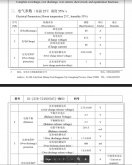fisherus
New Member
- Joined
- Nov 16, 2019
- Messages
- 93
Hi,Do you have a link, member name, or keywords that may help me find a thread on that particular build?
When you say break and rebuild, if I stay in a 12 cell configuration, I can leave the cells in their casing and I'd only need to cut the bars connecting each cell in series?
I've been so busy I haven't had the time to get on here. It appears that you are using a 24V system so, because I have a 24V system in place while I am building my 48V system, I can advise you what I did to accommodate the batteries into this system. All you need to do is remove the buss bar connection between the two 12 cell connection in each unit. Then parallel the units together. I used a Square D circuit breaker box and double pole circuit breakers to connect the batteries together. This allows the use of 10ga.stranded copper wire from each battery to the breaker. Thus, 8 batteries, 8 breakers. From the box to my inverter I am using 2 gauge stranded copper wire with a 300 amp fuse between them. I set my nominal at 30V and minimal at 24V. You can play with your settings to find what works best for you but, I don't think you want to be over 30V. I am only using eight 100W Renogy panels for this system
My 48V system under construction I am using 18 360w panels wired in series of 9 panels each, using 10ga. TWNN stranded copper wire to my Sol-Ark 12k, which has 2 built-in chargers, with each string wired to each charger. I have a battery bank of 16 LTO batteries wired to a Square D circuit box using double pole, single switch circuit breakers. I am using 10ga copper stranded wire to connect each battery to its own breaker and 4-0ga stranded copper wire to the Sol-Ark 12k inverter connections. (Little overkill but I like to be safe). I am almost finished building my battery rack out of 1 1/4" square steel tubing. I have ordered Daly BMS's customized for my batteries but really don't know if they are worth the additional expense as LTO cells rarely fail or go outside the perimeters of balance. They are there for monitoring purposes more than balancing. If you have any questions pm me



